Abstract
After three years of cercarial transmission control using focal application of niclosamide and weed removal in water contact sites (WCSs) in the project area of the Volta Lake, the numbers of WCSs infested with cercariae and infected snails were reduced by over 90% in areas of both high and low endemicity. This, combined with selective population chemotherapy, reduced the prevalence of Schistosoma haematobium infection by 72% in the area of low endemicity and 40% in the area of high endemicity. The intensity of infection in the villages was reduced by 78% in both areas. The overall annual cost of the cercarial transmission control programme was US $1.09 per capita.
Full text
PDF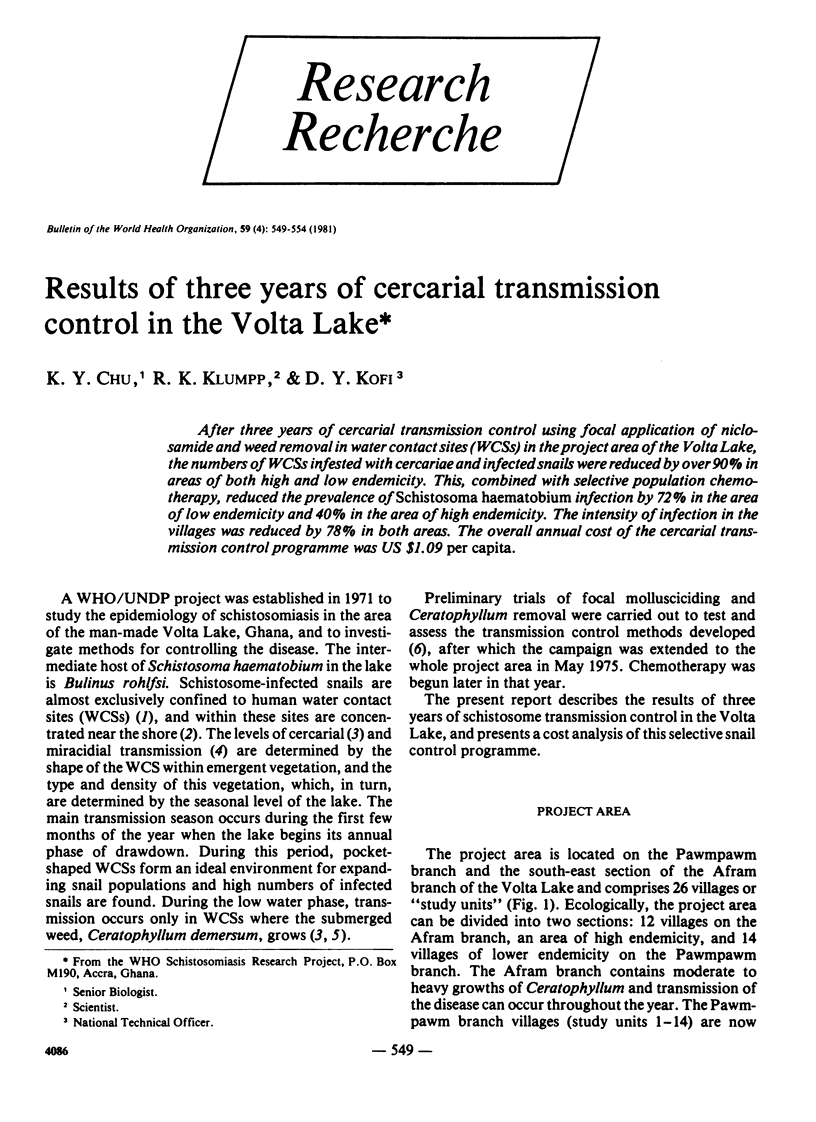
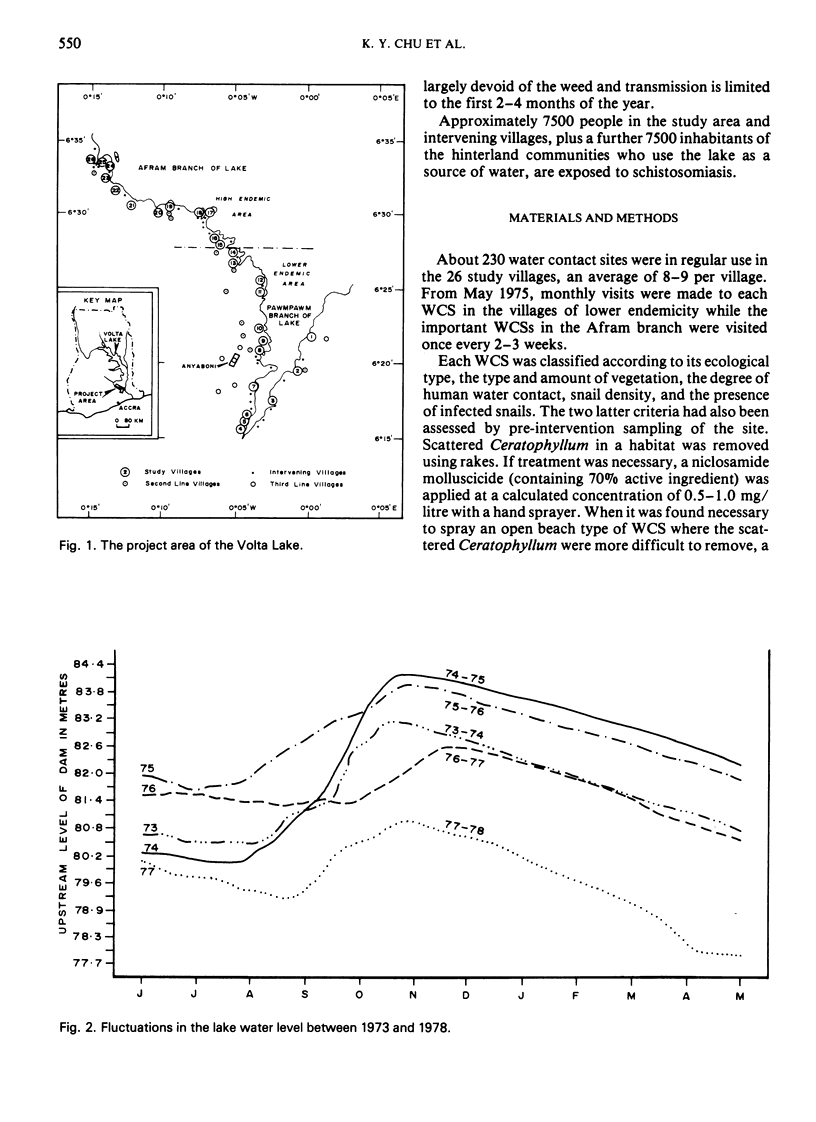
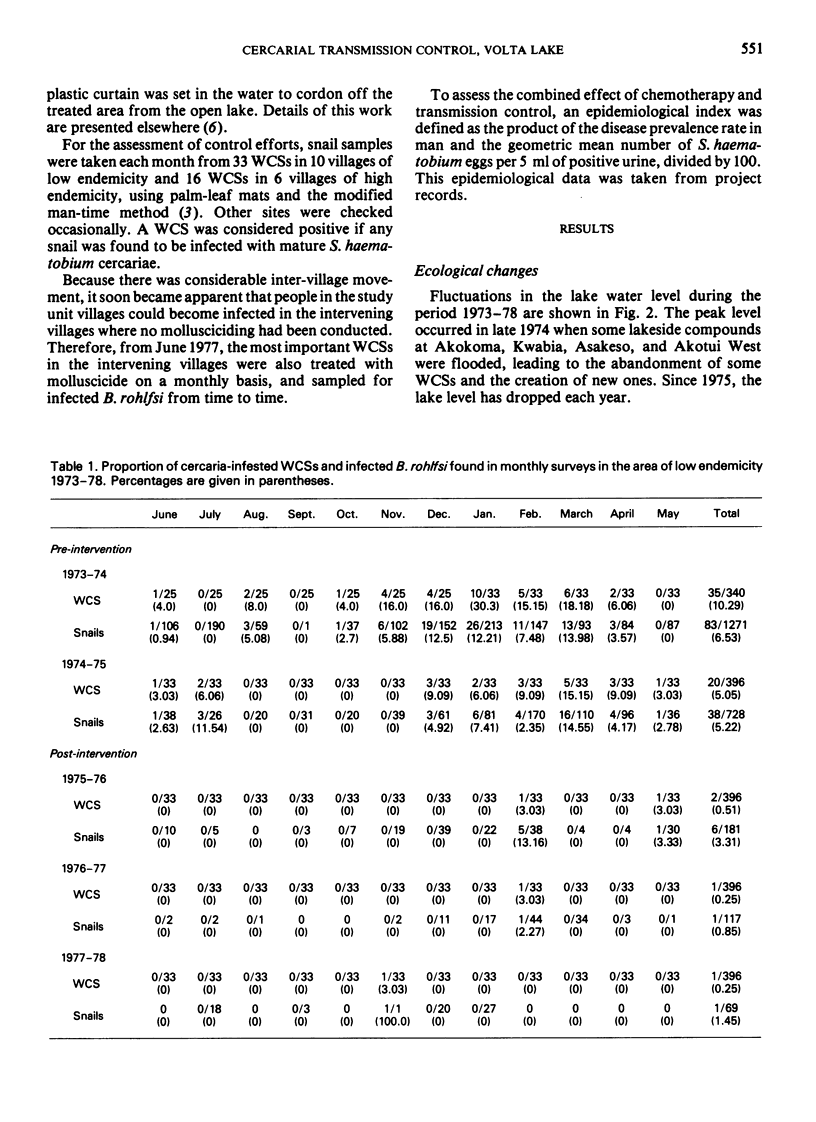
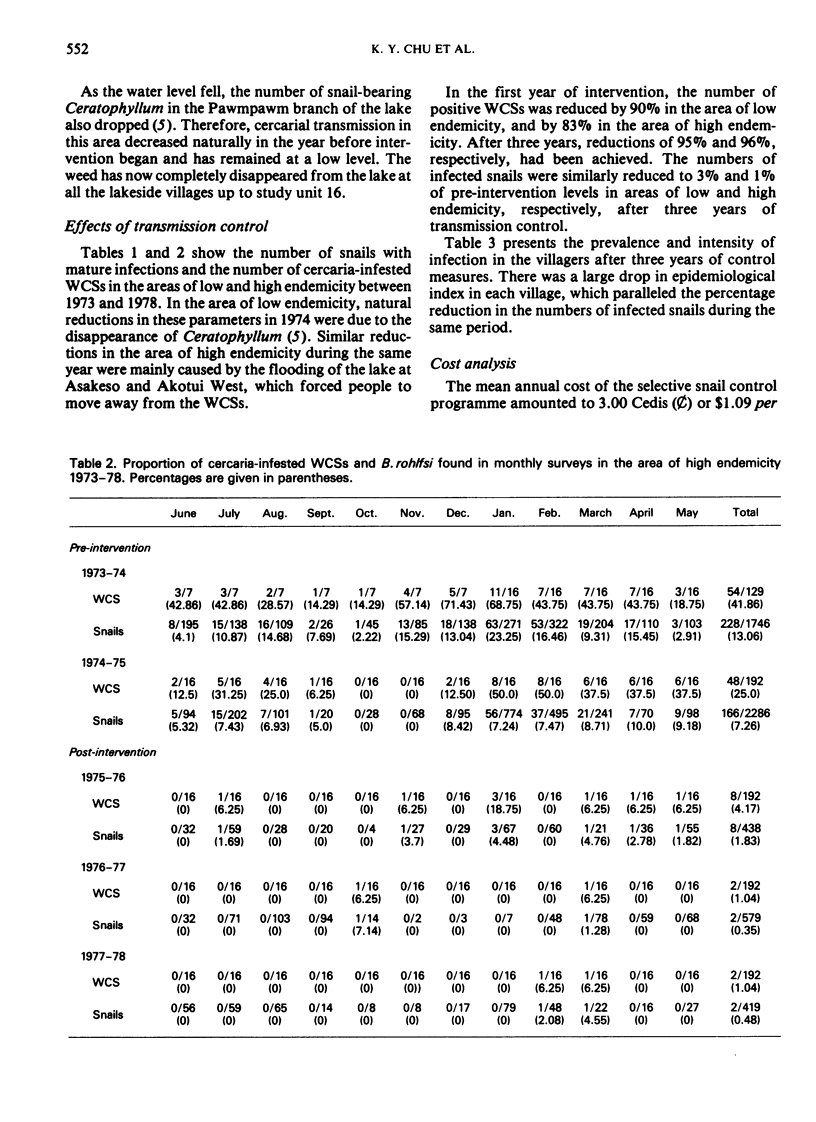
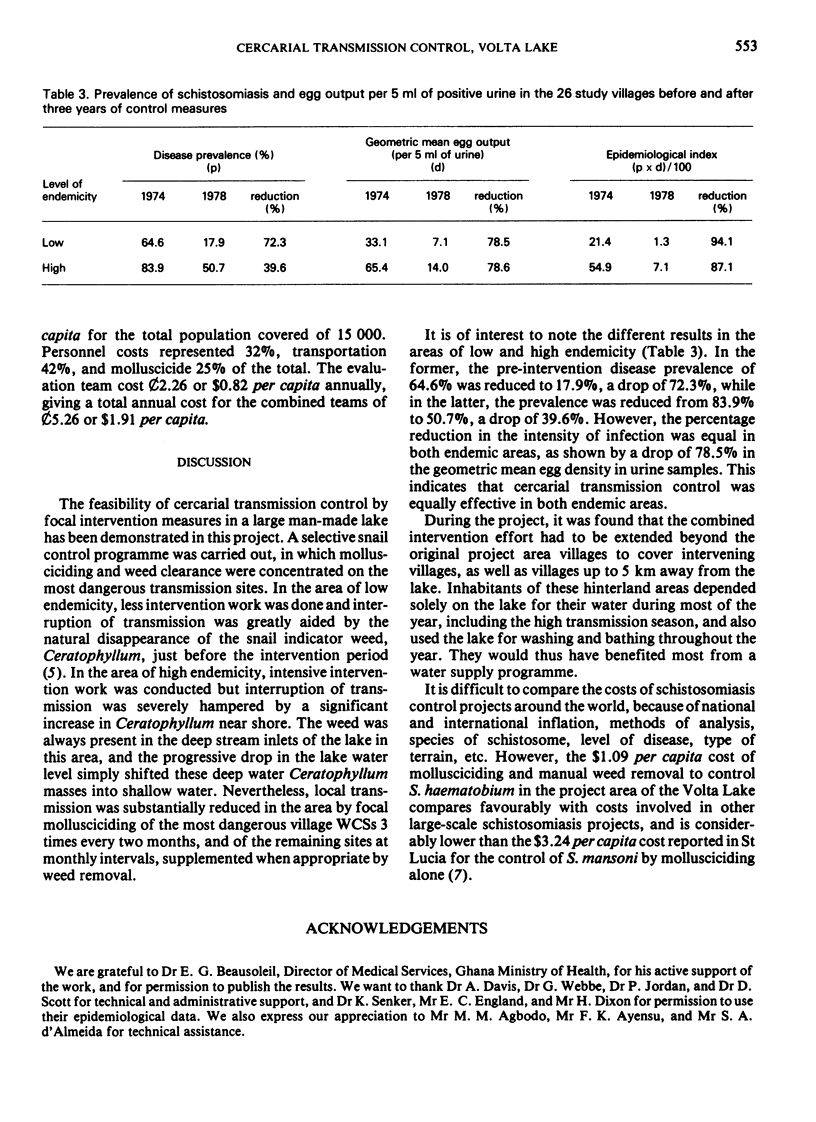
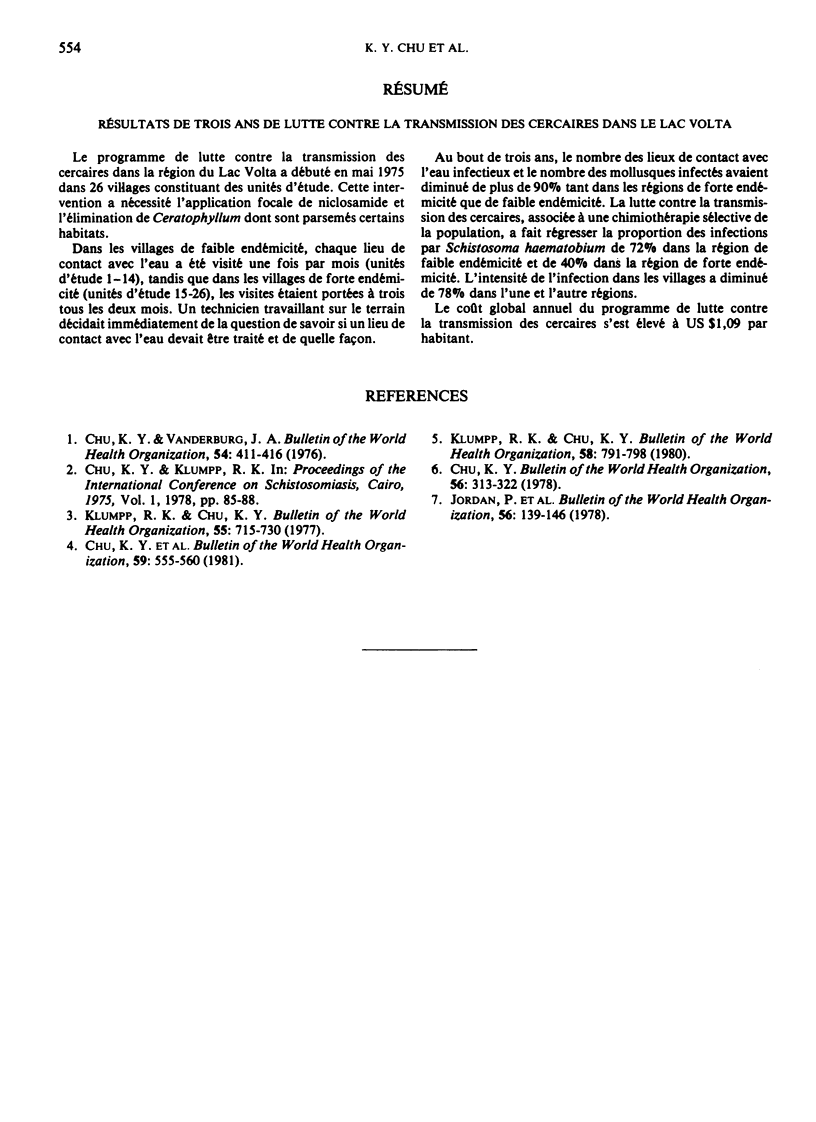
Selected References
These references are in PubMed. This may not be the complete list of references from this article.
- Chu K. Y., Vanderburg J. A. Techniques for estimating densities of Bulinus truncatus rohlfsi and its horizontal distribution in Volta Lake, Ghana. Bull World Health Organ. 1976;54(4):411–416. [PMC free article] [PubMed] [Google Scholar]
- Klumpp R. K., Chu K. Y. Ecological studies of Bulinus rohlfsi, the intermediate host of Schistosoma haematobium in the Volta Lake. Bull World Health Organ. 1977;55(6):715–730. [PMC free article] [PubMed] [Google Scholar]
- Klumpp R. K., Chu K. Y. Importance of the aquatic weed Ceratophyllum to transmission of Schistosoma haematobium in the Volta Lake, Ghana. Bull World Health Organ. 1980;58(5):791–798. [PMC free article] [PubMed] [Google Scholar]


